If your philodendron is drooping, there are a few possible reasons. The most common reason is that the plant is not getting enough water. This can be caused by not watering the plant enough, or by the plant being in a pot that doesn’t have good drainage. Another possible reason is that the plant is getting too much sun. If the leaves are turning yellow or brown, this is a sign of too much sun. Another possible reason is that the plant is not getting enough nutrients. This can be caused by using water that has a lot of chlorine in it, or by not fertilizing the plant regularly. If you’re not sure what the problem is, you can try moving the plant to a different location or pot.
Is It Normal for Philodendron to Droop?
It’s normal for philodendrons to droop when they’re thirsty. The leaves of the plant will start to droop when the soil is dry, telling you it’s time to water your plant. If you see your philodendron’s leaves drooping, give it a good drink of water and it should perk back up.

If the leaves are drooping and the soil is moist, it might be because the plant is getting too much sun. Move it to a spot with indirect light and the leaves should start to perk up. There are a few other reasons why your philodendron’s leaves might droop.
Repot your philodendron in a slightly larger pot with fresh potting mix and the leaves should start to look better. Another reason for droopy leaves is if the plant is pot-bound, meaning the roots have filled up the pot and need more room to grow.
Underwatering Causes Philodendron to Droop
The leaves will start to wilt and the stem will droop. When a philodendron droops, it is usually a sign that the plant is not getting enough water. If the plant is not watered soon, the leaves will turn yellow and eventually fall off.
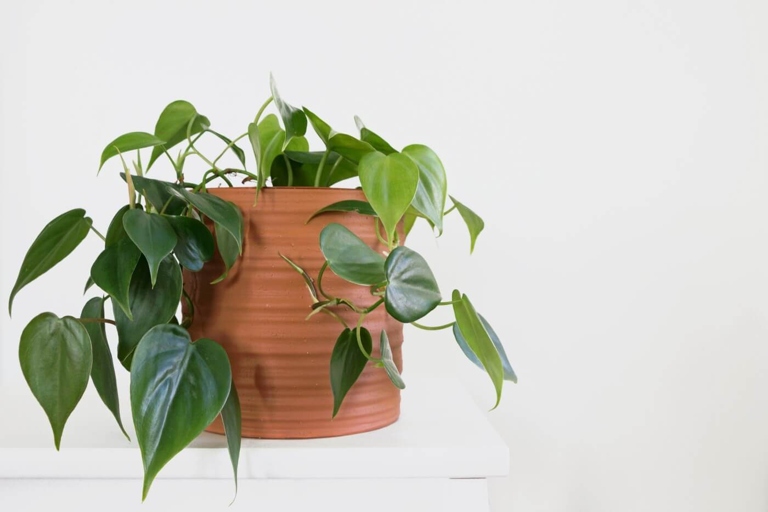
The best way to water a philodendron is to water it slowly and deeply. Water the plant once a week or as needed to keep the soil moist but not soggy. Allow the water to soak all the way through the pot and out the drainage holes. Be sure to empty any water that collects in the saucer under the pot.
If you think your philodendron is drooping from underwatering, give it a good drink and then check the soil to make sure it is draining properly. If the soil is too wet, let it drain for a few hours before watering again. If the soil is too dry, add some water.
Solution
One possibility is that the plant is not getting enough water. Another possibility is that the plant is getting too much sun. Check the soil to see if it is dry; if it is, water the plant thoroughly. If the problem persists, consult a plant expert for further diagnosis and advice. Give it a light feeding of a balanced fertilizer. Move it to a shadier spot. If your philodendron is drooping, there are a few potential causes and solutions. Finally, it could be that the plant needs fertilizer.
Overwatering
The best way to fix this problem is to let the plant dry out completely and then water it thoroughly. This is a sign that the plant is not getting enough water. One of the most common problems with philodendrons is overwatering. The leaves of the plant will start to droop and the stem will become mushy.
If you think you are overwatering your philodendron, the first step is to check the soil. If the soil is wet, then you need to water the plant less frequently. If the soil is dry, then you are not overwatering the plant.
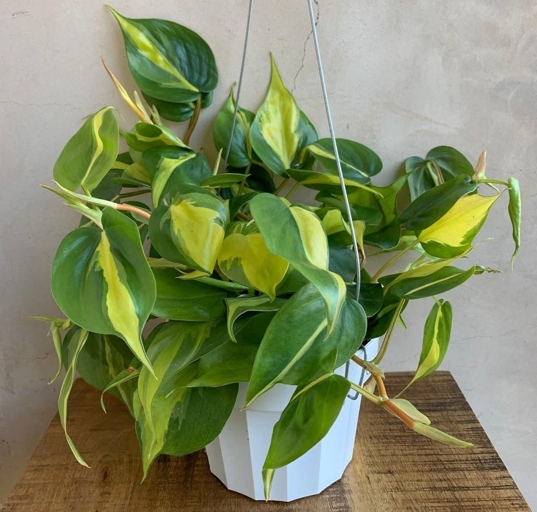
Another way to tell if you are overwatering your philodendron is to look at the leaves. If the leaves are yellow or wilted, then the plant is not getting enough water.
If you think you are overwatering your philodendron, the best solution is to let the plant dry out completely and then water it thoroughly.
Solution
If the leaves are yellowing, that may be a sign of too much fertilizer; cut back on fertilizing and see if the leaves return to green. Check the soil to see if it is dry; if it is, water your philodendron and see if it perks up. Another possibility is that the plant is getting too much sun. Move it to a shadier spot and see if that helps. If you can’t figure out the problem, or if the plant doesn’t improve, take it to a nursery or gardening center for help. One common reason is that the plant is not getting enough water. If your philodendron is drooping, there are several potential causes and solutions.
Loss of the Turgor Pressure
When a plant’s leaves droop, it can be a sign that the plant is not getting enough water. Turgor pressure is the pressure of the water inside the plant cells. One of the ways to tell if a plant is getting enough water is to check the turgor pressure. If the turgor pressure is too low, the leaves will droop.
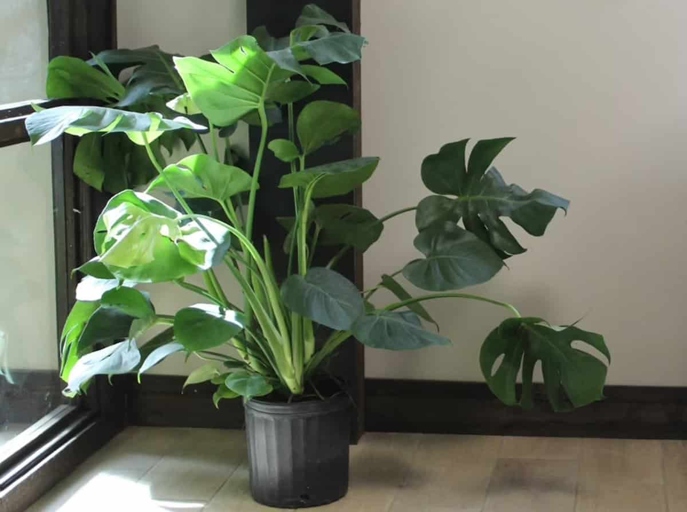
One reason is that the plant is not getting enough water. There are a few reasons why the turgor pressure might be too low. This can be due to high temperatures or high humidity. This can be due to a number of factors, such as not enough water in the soil, or the plant’s roots not being able to absorb water from the soil. Another reason for low turgor pressure is that the plant is losing water faster than it is taking in water.
If the plant is losing water too quickly, you can try misting the leaves or moving the plant to a cooler location. If you think that the turgor pressure is too low, you can try giving the plant more water. If the plant is not getting enough water from the soil, you can try watering it more frequently.
Solution
If you notice your philodendron drooping, there are a few possible causes and solutions. One reason your plant may be drooping is that it is not getting enough water. Check the soil to see if it is dry to the touch; if it is, water your plant and see if it perks up. Another possibility is that your plant is getting too much water; if the soil is soggy or the leaves are yellowing, cut back on watering.
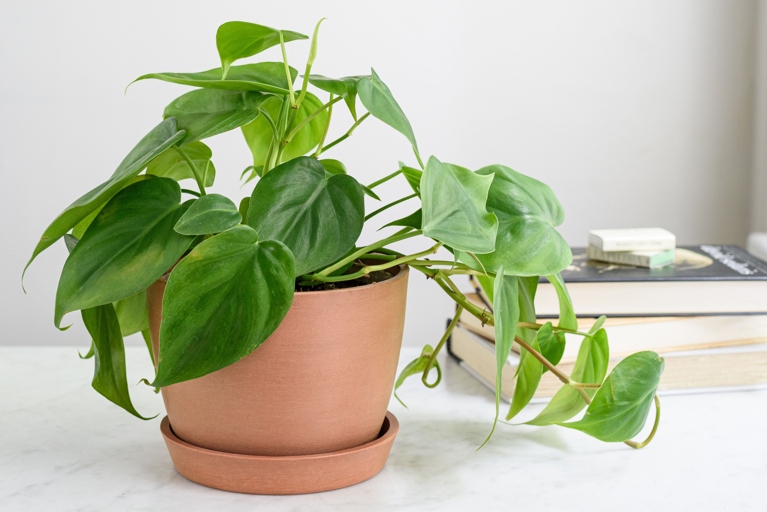
If you think your plant is getting the right amount of water but it is still drooping, it may be getting too much or too little light. Philodendrons like bright, indirect light, so if yours is in a dark spot, try moving it to a brighter location. If you can’t seem to find a happy medium, it may be time to invest in a grow light. If it is in a spot that gets direct sunlight, however, move it to a shadier spot.
Try cutting back on fertilizer and see if your plant improves. Finally, philodendrons can droop if they are not getting the right nutrients. If you are using a well-balanced fertilizer and your plant is still drooping, you may need to fertilize more often. If you are fertilizing too often, however, you may be causing your plant to droop.
Over-Temperature and Extreme Cold
If your philodendron is drooping, it could be a sign that the plant is too hot. Philodendrons like temperatures between 60 and 80 degrees Fahrenheit. If you think your philodendron is too hot or too cold, try moving it to a different location. If the temperature gets too high, the leaves will start to droop. If the temperature gets too low, the leaves will turn brown and die.
Solution
One possibility is that the plant is not getting enough water. Another possibility is that the plant is getting too much sun. Finally, the plant may be rootbound, meaning the roots are crowded in the pot and need more space. Check the soil to see if it is dry; if it is, water the plant thoroughly. Move it to a spot with indirect light. If your philodendron is drooping, there are a few potential causes and solutions. Repot the plant in a larger pot.
Low Humidity
Philodendrons are native to tropical rainforests, so they thrive in high humidity environments. If the air in your home is too dry, your philodendron will start to droop. If your philodendron is drooping, it’s likely due to low humidity.
You can also mist the leaves with a spray bottle filled with water. Be sure to do this in the morning so the leaves have time to dry before nightfall. There are a few things you can do to increase the humidity around your philodendron. The water will evaporate and increase the humidity around the plant. First, try placing the pot on a tray of pebbles and water.
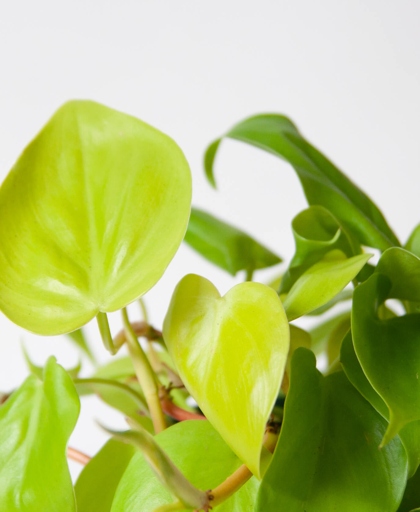
This will help to keep the air around your philodendron moist and prevent the leaves from drooping. If you live in a particularly dry climate, you may need to invest in a humidifier.
Solution
If your philodendron is drooping, there are a few possible causes and solutions. To fix this, allow the soil to dry out completely before watering again. Move your plant to a cooler spot. If the leaves are drooping but still green, this is usually a sign of too little water. If the leaves are yellow or brown, this is a sign of too much sun. Water your plant thoroughly and make sure the soil is moist but not soggy. The most common cause is overwatering, which can lead to root rot. If the leaves are wilted and soft, this is a sign of too much heat. Move your plant to a shadier spot.
Philodendron Leaves Drooping After Repotting
One of the most common reasons for a philodendron’s leaves drooping is that the plant has been overwatered. If you think you may have overwatered your philodendron, allow the soil to dry out completely before watering again. When this happens, the roots are unable to take up enough water to support the plant, and the leaves droop.
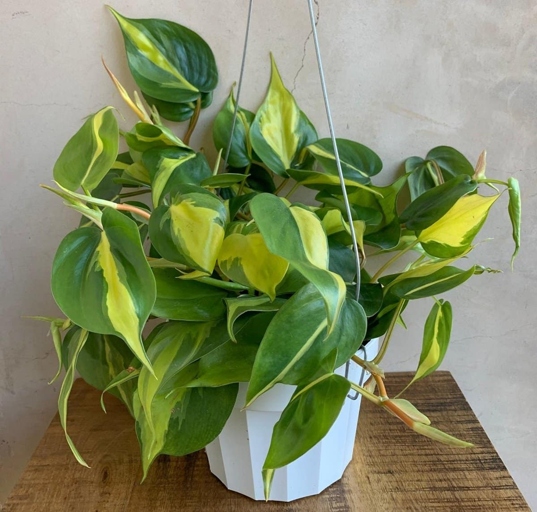
Another reason for drooping leaves is that the plant has been underwatered. During this time, the plant may need more water than usual. The roots need time to adjust to their new environment and establish themselves. This is often the case when a plant is first repotted. Once the roots are established, the plant will need less water.
If the soil is too wet, allow it to dry out before watering again. If the soil is too dry, water the plant and wait for the leaves to perk up. If your philodendron’s leaves are drooping, check the soil to see if it is too wet or too dry.
Solution
Check the soil to see if it is dry; if it is, water your plant thoroughly. If your philodendron is drooping, there are a few possible explanations. Another possibility is that the plant is getting too much sun. Move it to a shadier spot and see if that helps. Repot the plant in a larger pot and see if that makes a difference. If neither of these solutions works, it could be that the plant is rootbound, meaning the roots are crowded and need more room to grow. The most common reason is that the plant is not getting enough water.
Water Quality
One of the most common problems with philodendrons is water quality. If the water you’re using to water your philodendron is too high in minerals, it can cause the leaves to turn yellow and the plant to droop.
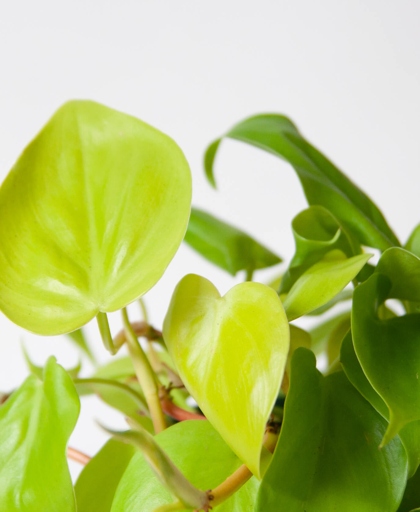
To fix this, you can either use filtered or distilled water, or you can let the water sit out for 24 hours before using it. This will allow the minerals to evaporate, leaving you with water that’s safe for your philodendron.
A mix that’s too heavy in clay can hold onto minerals, so switching to a lighter mix may help. If you suspect that water quality is the problem, you can also try changing the potting mix.
Solution
If your philodendron is drooping, there are a few possible causes and solutions. The solution is to let the soil dry out before watering again. The most common cause is overwatering. When the soil is too wet, the roots can’t get the oxygen they need, and the plant starts to wilt.
Another possible cause is too much sun. The solution is to give it some shade. If the leaves are scorched or the plant is wilting, it needs to be moved to a spot with less sunlight.
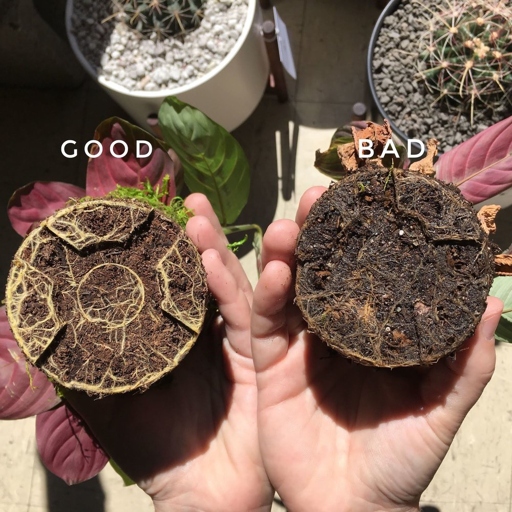
If the leaves are yellow or the plant is stunted, it needs to be fertilized. The solution is to give it a balanced fertilizer designed for houseplants. Finally, philodendrons can droop from lack of nutrients.
How Much Light Is It Getting?
These plants are native to the tropical rainforest, so they need bright, indirect light to thrive. If your philodendron is placed in a spot that’s too shady, it will start to droop. If your philodendron is drooping, it’s likely not getting enough light. Move it to a brighter location, and you should see it perk back up.
Solution
Move your philodendron to a brighter spot, or add a grow light if necessary. Another reason for drooping leaves is that the plant is not getting enough light. If the leaves are yellow or wilted, and the soil is soggy, you may be overwatering your plant. Finally, philodendrons can also droop if they are getting too much water. There are a few reasons your philodendron might be drooping. Let the soil dry out before watering again. The most common reason is that the plant is not getting enough water. Make sure to water your philodendron regularly, and check the soil to see if it is dry before watering.
Is It Getting Enough Nutrients?
If your philodendron is drooping, it’s likely that it’s not getting enough nutrients. When it comes to houseplants, one of the most common problems is lack of nutrients. This can be caused by a number of factors, including improper watering, poor soil, and lack of sunlight.
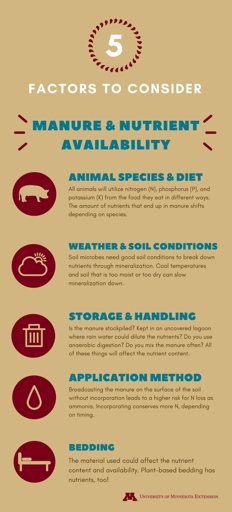
Second, feed your philodendron with a balanced fertilizer every few weeks. This will help to replenish the nutrients in the soil. There are a few things you can do to help your philodendron get the nutrients it needs. Overwatering can cause nutrients to leach out of the soil, so be sure to let the soil dry out between watering. If it’s not, it will have a hard time absorbing nutrients from the soil. First, make sure you’re watering it properly. Finally, make sure your philodendron is getting enough light.
By following these simple tips, you can help your philodendron get the nutrients it needs to stay healthy and happy.
Solution
One possibility is that the plant is not getting enough water. If the leaves are yellow, this may be a sign of nutrient deficiency; fertilize the plant with a balanced fertilizer. If the leaves are brown and crispy, this is a sign of over-watering; let the soil dry out before watering again. Another possibility is that the plant is getting too much sun. Check the soil to see if it is dry; if it is, water the plant thoroughly. Move it to a shadier spot. If your philodendron is drooping, there are a few potential causes and solutions.
Insect Infestation
Check the leaves for small, dark-colored insects. Be sure to follow the instructions carefully, as over-application can harm your plant. If you notice your philodendron drooping, it could be a sign of an insect infestation. If the infestation is severe, you may need to treat your plant with an insecticide. If you see any, you can try to remove them with a cotton swab dipped in rubbing alcohol.
Solution
Finally, if the plant is wilting or the leaves are drooping and curling, that may be a sign of pests or disease. Check the soil to see if it is dry; if it is, water your plant thoroughly. Move it to a brighter spot and see if that helps. One reason your plant may be drooping is that it is not getting enough water. Another potential reason for drooping is that the plant is not getting enough light. Inspect the plant carefully and consult a professional if necessary. If your philodendron is drooping, there are a few potential causes and solutions. If the leaves are yellow or brown, that indicates that the plant is getting too much light.
Diseases
The most common disease that affects philodendrons is root rot, which is caused by overwatering. If your philodendron is drooping, it could be due to a number of diseases. Make sure to fertilize your plant regularly to prevent this. If you think your plant may have root rot, try to improve its drainage and reduce its watering schedule. If the leaves of your philodendron are browning, it could be due to a fungal disease called botrytis. To prevent this, make sure to keep your plant’s leaves dry and remove any dead leaves promptly. If the leaves of your philodendron are yellowing, it could be due to a nutrient deficiency.
Solution
One possibility is that the plant is not getting enough water. Check the soil to see if it is dry; if it is, water your philodendron and see if it perks up. Move it to a brighter spot and see if that helps. Another possibility is that the plant is not getting enough light. If your philodendron is drooping, there are a few potential causes and solutions. If you suspect root rot, you should take your plant to a nursery or garden center for help. If neither of these solutions works, it is possible that your plant is suffering from root rot, which is a serious problem.
Has It Outgrown Its Container?
Your philodendron is a fast-growing plant that can quickly outgrow its pot. If your plant is drooping, it may be time to repot it.
Here are some signs that your philodendron has outgrown its pot:
The roots are coming out of the drainage holes
The plant is top-heavy and unstable
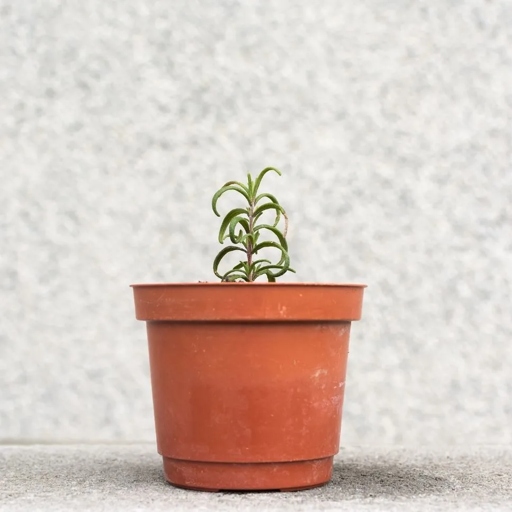
The pot is crowded and there is little room for the roots to grow
The plant is rootbound, meaning the roots have filled up the pot and are tightly packed
If you see any of these signs, it’s time to repot your philodendron. Be sure to use a well-draining potting mix and water the plant well after repotting. Choose a pot that is about 2-3 inches wider than the current pot.
Solution
One possibility is that the plant is not getting enough water. Another possibility is that the plant is getting too much water. Finally, philodendrons can droop if they are not getting enough light. Move the plant to a brighter location. If the soil is soggy or the leaves are yellowing, you may be overwatering. Check the soil to see if it is dry; if it is, water the plant thoroughly. If your philodendron is drooping, there are a few potential causes and solutions. Let the soil dry out before watering again. If you have tried these solutions and the plant is still drooping, it may be time to repot it.
Lack of Root Development
To fix this, you need to improve the conditions for the roots. One possibility is that it isn’t getting enough water. There are several reasons why your philodendron might be drooping. Make sure the plant is getting enough water and nutrients, and that the roots have good drainage. Another possibility is that the roots aren’t developing properly. If the roots aren’t developing properly, the plant won’t be able to take up water and nutrients properly, and it will start to droop. This can be caused by a number of factors, including too much or too little water, poor drainage, or a lack of nutrients. Make sure you’re watering it regularly and giving it enough water each time.
Solution
One possibility is that the plant is not getting enough water. Another possibility is that the plant is getting too much water. If the soil is soggy or the leaves are yellowing, cut back on watering. Check the soil to see if it is dry; if it is, water the plant thoroughly. If you suspect any of these, try to correct the problem and see if the plant improves. Finally, the plant may be drooping due to stress from too much or too little light, temperature changes, or pests. If your philodendron is drooping, there are a few potential causes and solutions.
Fertilizer Application Mistake
When you water your plant, be sure to allow the water to drain out completely before putting it back in its pot. If you notice your philodendron drooping, it could be a sign that you’re overwatering it. If the pot doesn’t have drainage holes, you can add some rocks to the bottom to help with drainage.
Too much fertilizer can cause your plant to droop. Another possibility is that you’re using too much fertilizer. When you fertilize your plant, be sure to follow the instructions on the package.
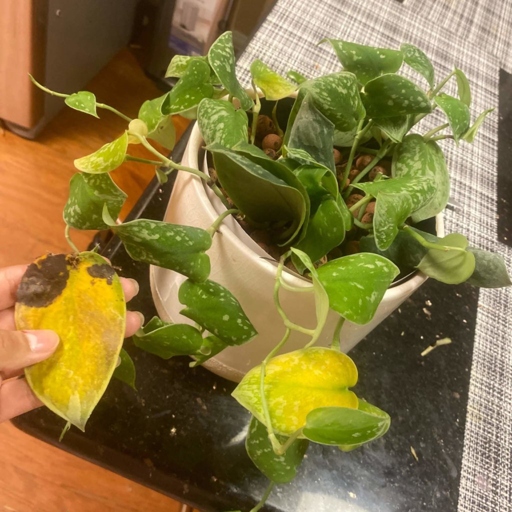
Your plant should start to recover within a few days. Just cut back on how much water or fertilizer you’re using. If you think you may have made a mistake with your watering or fertilizing, don’t worry.
Solution
When your philodendron starts to droop, it can be a sign that something is wrong. There are a few possible causes, and a few possible solutions.
One possible cause is that the plant is not getting enough water. If the soil is dry, give the plant a good watering. If the soil is soggy, however, you may need to drain it and let it dry out a bit.
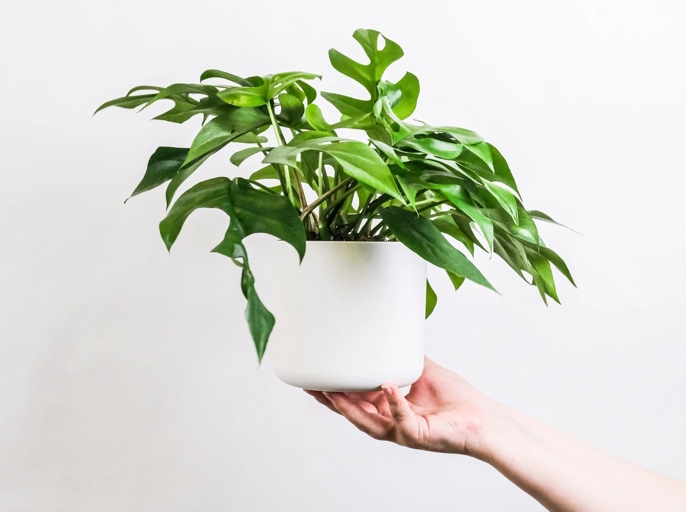
Move it to a spot where it will get more light, but be careful not to put it in direct sunlight, which can scorch the leaves. Another possible cause is that the plant is not getting enough light.
If your philodendron is still drooping after you’ve tried these solutions, it may be time to consult a plant expert.
Frequently Asked Questions
1. Why is my philodendron drooping?
There are several possible reasons for your philodendron to droop. It could be due to too little water, too much sun, or a nutrient deficiency.
2. How can I tell if my philodendron needs more water?
The easiest way to tell if your philodendron needs more water is to check the soil. If it feels dry to the touch, it’s time to water your plant.
3. I think my philodendron is getting too much sun. What are the signs?
If your philodendron is getting too much sun, the leaves will start to turn yellow or brown. The plant may also become stunted and stop growing.
4. What are the signs of a nutrient deficiency in my philodendron?
If your philodendron is lacking nutrients, the leaves will become pale and may start to drop off. The plant may also become stunted.
5. How can I fix a nutrient deficiency in my philodendron?
The best way to fix a nutrient deficiency is to fertilize your plant. You can also add compost or organic matter to the soil to help improve its nutrient content.
6. I think my philodendron has a disease. What are the signs?
There are several diseases that can affect philodendrons, but the most common one is root rot. The symptoms of root rot include wilting, yellowing leaves, and stunted growth.
7. How can I prevent my philodendron from getting diseases?
The best way to prevent diseases is to keep your plant healthy. This means watering it properly, giving it the right amount of sun, and fertilizing it regularly.
8. What are some common pests that can affect my philodendron?
There are several pests that can affect philodendrons, including aphids, mealybugs, and spider mites. These pests can cause the leaves to turn yellow or brown, and they can also stunt the plant’s growth.
9. How can I get rid of pests on my philodendron?
There are several ways to get rid of pests on your philodendron. You can use insecticidal soap, neem oil, or horticultural oil. You can also introduce beneficial insects, such as ladybugs, into your garden.
10. My philodendron is still drooping. What should I do?
If your philodendron is still drooping, it’s possible that it’s not getting enough light. Move it to a location where it will get more light, and make sure to water it regularly.
Final thoughts
If your philodendron is drooping, it is likely due to one of the following reasons: too much sun, not enough water, or too much fertilizer. Each of these can be easily fixed by making sure your plant is in a well-lit spot but out of direct sunlight, watering it when the soil is dry to the touch, and fertilizing it every two weeks. With a little TLC, your philodendron will be back to its perky self in no time!
